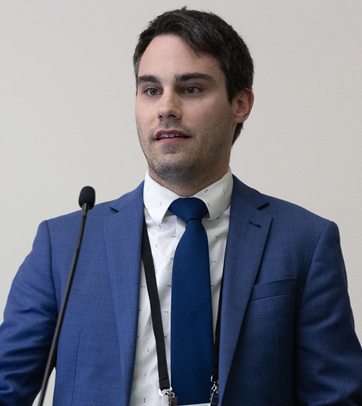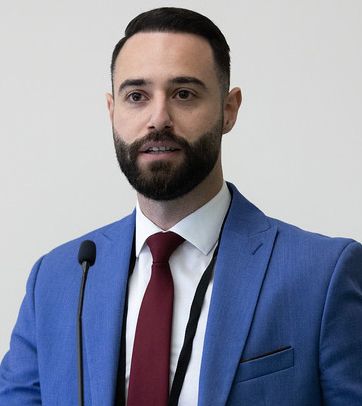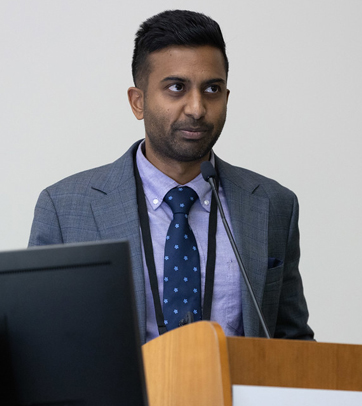

By Austin Sim, MD, JD, James Cancer Hospital - The Ohio State University Comprehensive Cancer Center




Through the seemingly inexorable march toward greater omission of radiotherapy in the management of hematologic malignancies, each new paradigm shift can present an opportunity to re-engage our colleagues to consider optimal integration of radiotherapy in these new treatment paradigms, like chimeric antigen receptor (CAR) T-cell therapy, but how and when?
Yegya-Raman et al. examine integrating bridging radiotherapy prior to CAR T in their multi-institutional retrospective review analyzing the outcomes of 115 patients across six institutions. Despite negative prognostic factors, bridging radiotherapy was able to achieve favorable response rates with no increase in toxicity compared to CAR T alone. Patients were treated with a median biologically effective dose of 31.3 Gy (most commonly 30 Gy in 10 fractions) and comprehensive RT to all sites of visible disease was associated with a superior progression free survival.
Once the bridging radiotherapy has been delivered, Ladbury et al. provide some insight into gauging responses using PET metrics before and after bridging radiotherapy. Among 23 patients with 33 irradiated sites to a median 2-Gy-equivalent dose (EQD2) of 26 Gy (10 patients treated with comprehensive radiotherapy), no local treatment failures were seen when EQD2 > 32.5 Gy. Of note, reductions in the metabolic tumor volume of at least 36 cc or SUVmax of at least 15 were associated with an improved progression free survival. Reductions in the SUVmax of at least 14 or SUVmean of at least seven were associated with an improved local control rate.
On the back end, Omran Saifi, MD, et al. analyzed radiotherapy after an incomplete response to CAR T as documented on the Day+30 post-CAR T PET in a multi-institutional cohort of 60 patients. Nine patients received bridging radiotherapy, 11 patients received consolidative radiotherapy, and four patients received both, totaling a cohort of 15 patients treated with consolidative radiotherapy to a median EQD2 of 39.1 Gy (most commonly 37.5 Gy in 15 fractions). Within the observation cohort, two thirds experienced disease progression, all involving prior residual disease sites. Within the consolidation radiation cohort, 10 patients achieved a complete response and three patients had disease progression, all outside of the irradiated volume. A significant difference in progression free survival was detected between these two cohorts favoring consolidative radiation. Comprehensive consolidative radiotherapy further improved progression free survival and even resulted in improvement in overall survival at two years compared to the pooled observation/focal radiotherapy cohort.
"This is an interesting but not surprising finding as radiation has long proven to be an effective consolidative treatment following chemoimmunotherapy," stated Dr. Saifi. "I strongly recommend referring CAR T patients with incomplete response on day+30 to radiation oncology to discuss consolidative radiation options as this can improve outcomes with minimal added toxicity.”
Also in the consolidation setting, Kumar et al. took a different tact in their single arm open label Phase I/II study of “re-priming” radiotherapy in patients with residual disease on the Day+30 PET. The Phase I portion of their study enrolled six patients, representing a mix of patients with primary refractory disease (n=2) and others after a median of 2.5 lines of salvage therapy, none with prior radiotherapy. Nearly all patients (n=5) received 30 Gy in 5 fractions and the remaining patient received 36 Gy in 10 fractions. These regimens were associated with no grade 3+ dose limiting toxicities within the 60-day post radiotherapy period. The investigators concluded these doses were safe and will carry them forward to the subsequent Phase II portion of this trial.
Taken together, these studies highlight some common themes: radiotherapy administered either as bridging or as consolidation appears to improve outcomes, especially when delivered in a comprehensive manner (acknowledging the confounder of disease burden) and with a slight skew toward higher doses. In line with modern lymphoma literature, PET characteristics appear to be effective prognostic and predictive factors. Lastly, the presentation of prospective data in this space represents a welcome addition to better establish the role of radiotherapy in the CAR T paradigm and serves as a harbinger of future prospective studies. It is incumbent on us to push forward as active partners with our hematology colleagues, eschewing the role of the passenger princess.
Abstract 191 – Bridging Radiotherapy prior to Chimeric Antigen Receptor T-Cell Therapy for B-Cell Lymphomas: An ILROG Multi-Institutional Study; Abstract 192 – Phase I Trial of Re-Priming Radiation Therapy for Relapsed/Refractory Non-Hodgkin Lymphoma Patients in Incomplete Response after Chimeric Antigen Receptor T-Cell (CAR-T) Therapy; Abstract 193 – Consolidative Radiotherapy for Residual PET-Avid Disease on Day +30 Post Car T-Cell Therapy in Non-Hodgkin Lymphoma; Abstract 194 – Prognostic Significance of Positron Emission Tomography Delta Radiomics Following Bridging Therapy in Patients with Large B-Cell Lymphoma Undergoing CAR T-Cell Therapy were presented on October 2, 2023, during the SS 17 – HEME 1: Supercharged CAR T Cell Therapy: When, Where, and How Hard to Strike with Radiation for Lymphomas session at the 2023 ASTRO Annual Meeting.